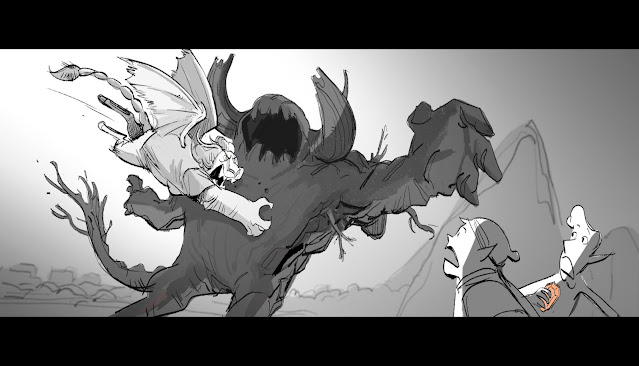Le Tang: Onward Beat Boards
Pixar story artist Le Tang shared these beat boards he did while working on Onward, on his Instagram. He explained how they would use beat boards during the production. I find it very interesting to hear they they sometimes use beat boards in the storyreel, because I’ve never got to use them in this way.
In my experience it is very common to get beat boards with the script, they are often done by the head of story or sometimes even the by the director. Often they are leftovers from the early stages of production, when they were still working on the first version of the screenplay. In other cases I’ve drawn beat boards myself, but those were done to explore ideas for a scene or moment. I never had a screening that included beat boards in the edit.
Below are Le Tangs great beat boards, followed by the transcript of his Instagram post. The second part of the transcript is his reply to a question I asked him. I was curious if the beat boards were actually edited into the reel or if they pitched them live during the screening.
Every once in awhile we weren’t able to completely storyboard every scene for a screening so we did beat boards as placeholders instead—they’re like storybook illustrations that have narration on them. Beat boards are more succinct images to communicate story points, and not as concerned with cameras movement, choreography, or multiple poses as storyboards are—tell the idea in one image and move on.
The [beat boards] are included in the edit with recorded narration. Beat boards are often used for action scenes because action scenes can be more straightforward and they tend to take more time to board too. The tricky thing is sometimes beat boards can hide story issues, because you’re not digging into the details of a scene, more like the broader ideas. And also beat boards don’t fully show how long a scene is—is this 3 minutes or is it 7? So energy and momentum isn’t as clear yet.









